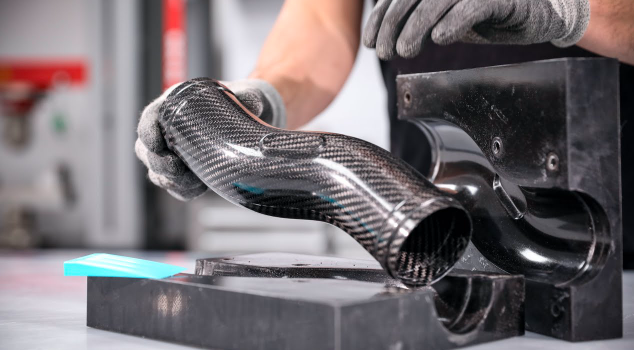Carbon Fiber Mold Making: Shaping the Future of Advanced Manufacturing

Introduction
Carbon fiber mold making is a foundational process in modern composites manufacturing. However, achieving precision in carbon fiber components starts with one critical step: the mold. The mold determines not only the final product’s shape but also its surface quality, dimensional accuracy, and structural integrity.
This article explores the essential methods, materials, benefits, and challenges of carbon fiber mold making, providing valuable insight for engineers, manufacturers, and advanced hobbyists.
What Is Carbon Fiber Mold Making?
carbon fiber mold making refers to the creation of molds or tooling used to form carbon fiber composite parts. These molds must withstand curing temperatures and pressures, deliver fine surface finishes, and maintain dimensional stability throughout repeated use. Depending on the application, molds can be made from various materials, including fiberglass, aluminum, epoxy tooling board, and even carbon fiber itself.
Why Use Carbon Fiber?
Before discussing the mold making process, it’s important to understand why carbon fiber is so popular:
- High Strength-to-Weight Ratio: Stronger than steel but far lighter.
- Stiffness: Excellent resistance to flexing and deformation.
- Thermal Stability: Withstands high temperatures, especially in aerospace applications.
- Fatigue Resistance: Performs reliably over long-term use.
- Corrosion Resistance: Ideal for marine and chemical applications.
Given these properties, precision in mold making becomes critical. Any imperfection in the mold is transferred directly to the finished product.
Mold Materials for Carbon Fiber
Choosing the right material for mold construction depends on the number of parts to be made, required tolerances, and curing methods. Common mold materials include:
1. Fiberglass Molds
Best for hobbyist and small-scale applications.
2. Epoxy Tooling Board
Ideal for prototyping and one-off parts. Easy to machine, but limited in high-temperature tolerance.
3. Aluminum Molds
Great for high-volume runs. Durable, reusable, and compatible with autoclave curing.
4. Carbon Fiber Molds
High-end tooling for maximum performance. Offers excellent thermal expansion compatibility with carbon fiber parts, reducing distortion.
See also: Smart Strategies for Hassle-Free Business Growth
Steps in Carbon Fiber Mold Making
Step 1: Create a Master Model
The process starts with a “master” or “plug,” a full-scale model of the desired part. This master can be sculpted by hand or CNC-machined from foam, wood, or epoxy board. It must have a smooth, finished surface because all surface details will transfer to the mold and then to the final part.
Step 2: Apply Release Agent
Before mold construction, a mold release wax or agent is applied to the master to ensure the mold doesn’t bond to it during curing. This step is critical for avoiding mold damage.
Step 3: Lay Up the Mold Material
Depending on the chosen mold material, layers of fiberglass or carbon fiber fabric are applied over the master, impregnated with epoxy or polyester resin. In industrial settings, this step is often assisted by vacuum bagging to remove air bubbles and improve compaction.
Step 4: Curing
Post-curing at higher temperatures may be required for molds intended for high-heat applications.
Step 5: Demold and Finish
The interior surface is then sanded, polished, and often coated with a mold sealer to improve longevity and ease of demolding.
Step 6: Mold Preparation for Use
Before being used to produce carbon fiber parts, the mold is once again coated with release agent and inspected for defects. At this stage, the mold is ready for composite lay-up.
Types of Molds
Carbon fiber mold making involves various mold types depending on the complexity and production volume of the part.
- Open Molds: Simple one-sided molds used for flat or slightly curved parts.
- Closed Molds: Two-part molds that fully encase the carbon fiber during curing.
- Multi-Part Molds: Used for highly complex geometries that cannot be demolded from a single direction.
Each type has unique advantages depending on the production requirements and the complexity of the part being manufactured.
Benefits of Precision Mold Making
1. Repeatability
High-quality molds can produce dozens or even hundreds of identical parts with consistent geometry and surface quality.
2. Time Efficiency
Once the mold is prepared, production time per part decreases significantly compared to manual shaping.
3. Cost Savings
Though mold creation may be expensive, it drastically reduces cost per part in mass production scenarios.
Challenges and Considerations
Despite its advantages, carbon fiber mold making poses several challenges:
- Tooling Cost: High-precision molds, especially those for autoclave use, are expensive.
- Thermal Expansion Mismatch: Molds and carbon fiber composites can expand at different rates, leading to defects. Using carbon fiber molds can mitigate this issue.
These challenges necessitate careful planning, skilled craftsmanship, and quality materials.
Innovations in Mold Making
Modern technologies are revolutionizing carbon fiber mold making:
- 3D Printing: Large-scale additive manufacturing is now used to print master patterns or even molds themselves using high-temperature polymers.
- CNC Machining: Provides high-accuracy cutting for complex master shapes and mold details.
- Hybrid Tooling: Combines multiple materials like metal frames with composite faces for lightweight but durable molds.
- Simulation Software: Engineers use computer models to predict how molds and parts will behave under heat and pressure, allowing for better mold design.
Conclusion
Carbon fiber mold making is an essential process in producing advanced composite parts that meet the highest standards of performance and design. From automotive panels to aerospace components, the mold forms the foundation upon which strength, precision, and efficiency are built.
By combining time-tested techniques with modern innovations, manufacturers can produce lightweight, durable, and high-performance parts consistently and cost-effectively. For those serious about composites manufacturing, mastering carbon fiber mold making is not just a skill—it’s a competitive advantage.




